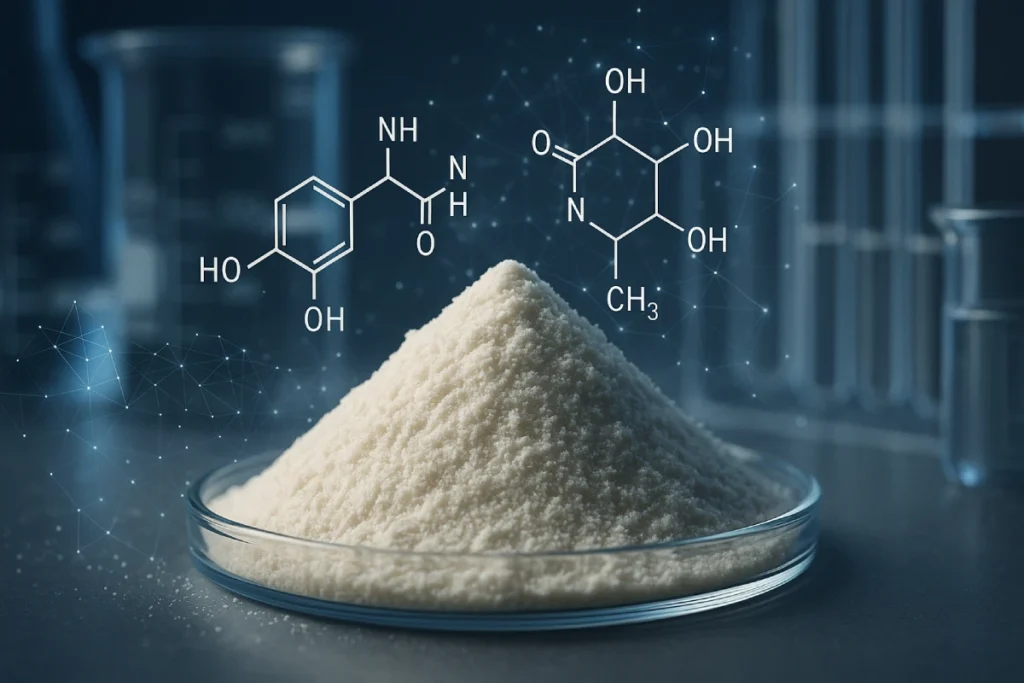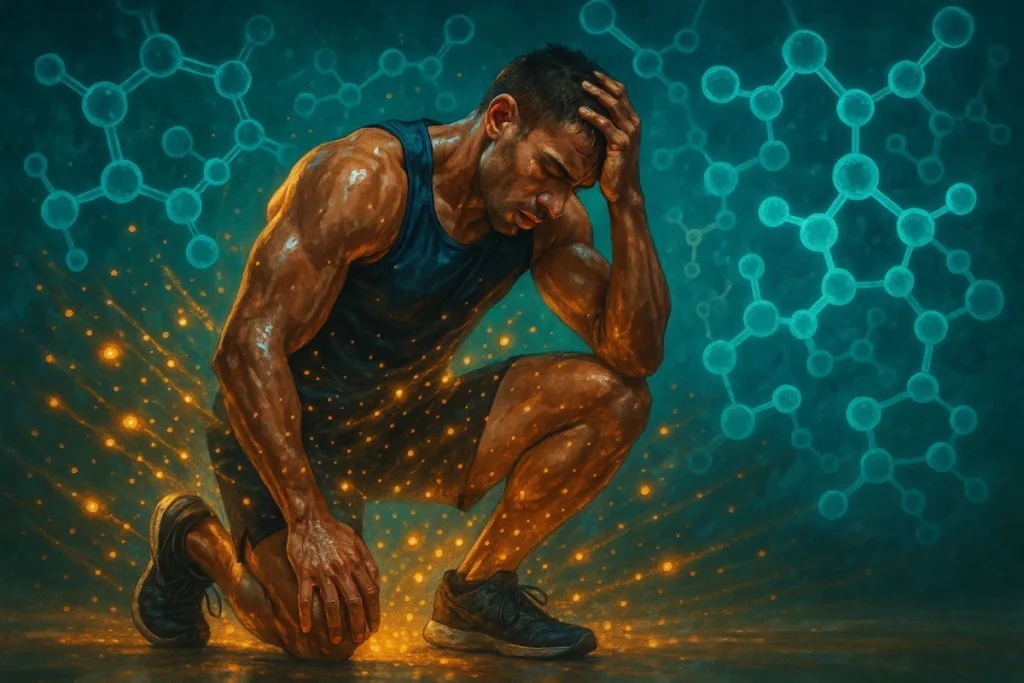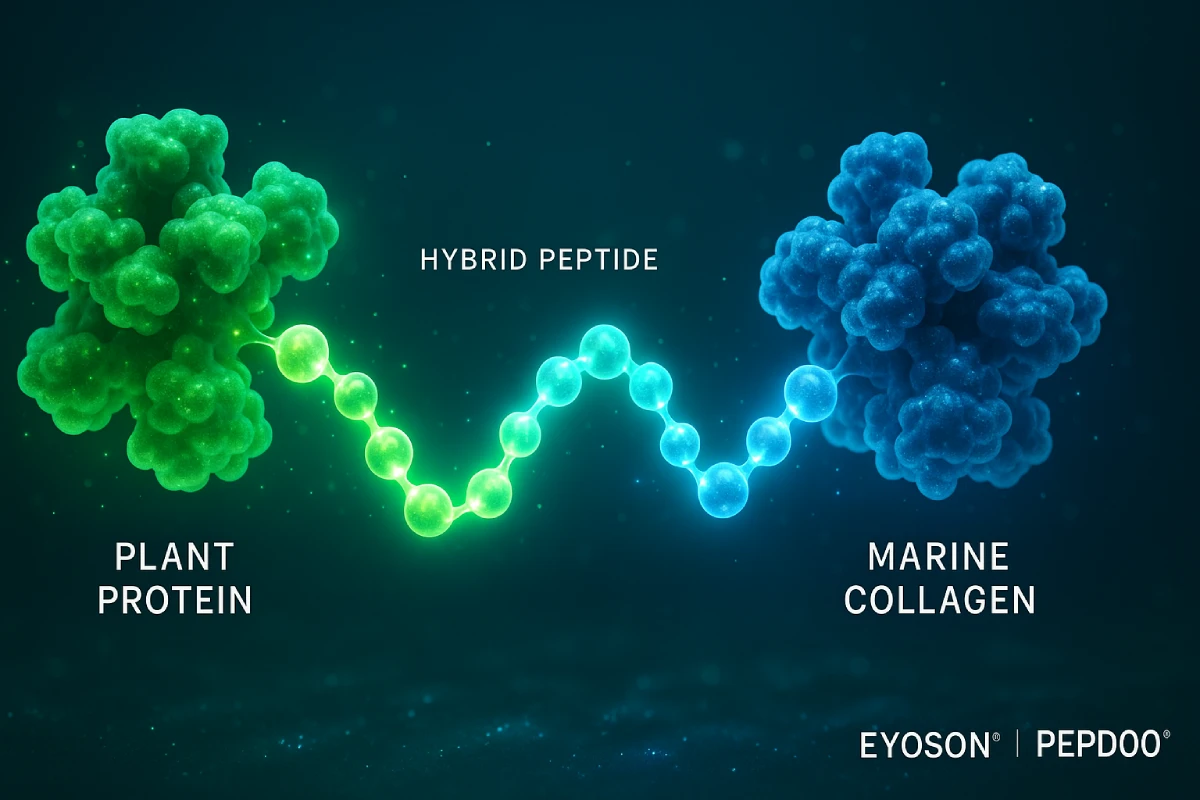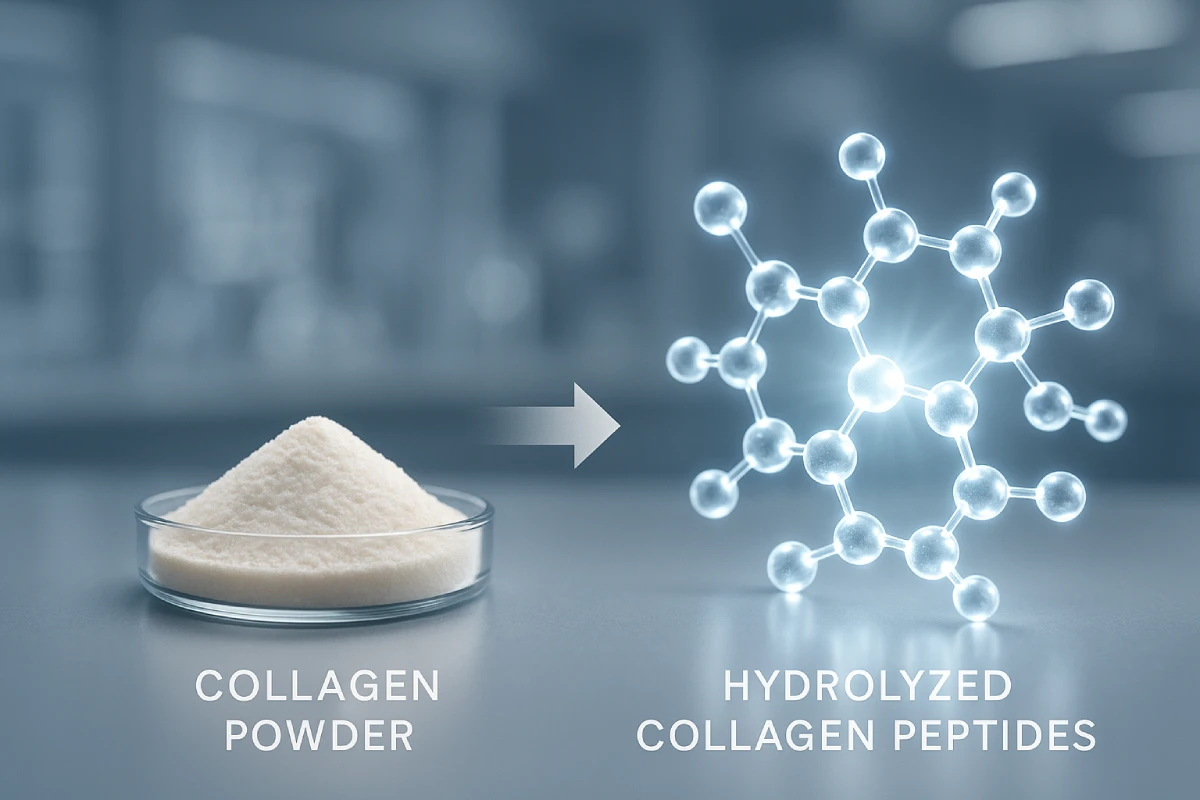Oyster Peptides for Anti-Fatigue: Expanding Marine Nutrition Applications
Marine-derived peptides are increasingly recognized as high-value functional ingredients for sports nutrition. Oyster hydrolysates (oyster peptides) combine favorable amino-acid profiles, low molecular weight fractions, and demonstrable bioactivities (antioxidant, metabolic, and recovery-promoting). This article is written for B2B audiences — R&D, procurement, and brand teams — and covers mechanisms, formulation opportunities, published evidence, real-world use cases, and how a source-to-supply partner like PEPDOO® can accelerate product development and scale-up. Scientific citations are shown inline as [1], [2], etc., with full APA references at the end.
1. The rise of marine peptides in next-generation sports nutrition
The sports-nutrition category is moving beyond macronutrient claims toward precision functional ingredients that target recovery, endurance, and metabolic resilience. Marine peptides — short, bioactive sequences derived from fish, shellfish, and algae proteins — are attracting R&D interest because they often combine: (a) high bioactivity per milligram, (b) compatibility with beverage and bar systems, and (c) consumer perception of “natural” and “marine” origin. Oyster hydrolysates, specifically, are emerging as an anti-fatigue ingredient due to a converging evidence base from preclinical models, mechanistic studies, and pilot human trials. Keywords: marine peptide ingredients, sports nutrition ingredient, oyster hydrolysate.

2. What are oyster hydrolysates — a practical definition for formulators
Oyster hydrolysates (oyster peptides) are the protein fractions obtained when oyster tissue (meat) is enzymatically hydrolyzed and fractionated to enrich low-molecular-weight peptides (commonly <6 kDa for the most bioavailable fractions). Compared with crude oyster extract or whole-meal powders, hydrolysates provide:
- Higher specific activity — enrichment of short peptides with targeted sequences.
- Improved bioavailability — smaller peptides are absorbed more rapidly across the intestinal barrier.
- Formulation flexibility — water-soluble, suitable for beverages, RTD, powders, and capsule systems.
From a sourcing and technical perspective, working with a reliable peptide manufacturer / peptide supplier / peptide factory that controls enzyme selection, hydrolysis parameters, and molecular-weight cutoffs is essential to reproducible efficacy across lots.
> Brand note: As a full-category peptide manufacturer and industry standard-setter, PEPDOO® delivers precision enzymatic hydrolysis, patented fractionation, and industrial scale: ensuring oyster hydrolysate batches meet targeted molecular-weight distributions and functional specifications required by sports-nutrition formulators.
3. Mechanisms: how oyster peptides combat fatigue (what R&D needs to know)
Understanding plausible mechanisms helps formulators and regulatory teams craft evidence-based claims. Key anti-fatigue mechanisms supported by experimental literature include:
- Energy metabolism optimization. Oyster peptides have been shown in preclinical models to increase muscle and liver glycogen stores and support ATP generation during prolonged exercise, which directly preserves performance capacity. [1]
- Oxidative stress reduction. Many oyster-derived peptides exhibit antioxidant activity (scavenging ROS, upregulating endogenous antioxidant enzymes such as SOD, CAT, and GSH-Px), limiting oxidative damage that contributes to post-exercise fatigue. [2]
- Enhanced lactate clearance and reduced metabolic by-products. Studies in rodents report lower post-exercise blood lactate and blood urea nitrogen (BUN) after oyster peptide supplementation, indicating improved metabolic recovery. [1]
- Immune and barrier support. Oyster peptides may modulate immune signaling and gut integrity (reducing systemic inflammation and promoting recovery), an important benefit for athletes undergoing heavy training loads. [2][3]
For formulators, these mechanisms suggest oyster hydrolysates are best positioned as recovery-focused actives (post-exercise beverages, recovery capsules) and as adjuncts in endurance products.
4. Evidence base: preclinical data, human trials, and systematic observations
The body of literature includes multiple preclinical studies and a growing number of controlled human and pilot investigations:
- Preclinical (rodent) studies consistently show prolonged exercise time (e.g., forced swimming endurance), elevated glycogen reserves, lower BUN, and antioxidant enzyme modulation following administration of low-molecular-weight oyster hydrolysate fractions [1][4]. These studies often isolate peptide fractions <6 kDa as the most active component. [1]
- Mechanistic and cellular work has characterized specific dipeptides and tripeptides from oyster hydrolysates with antioxidant and metabolic regulatory effects (for example, sequences implicated in enhancing alcohol metabolism and protecting hepatic function, which overlaps mechanistically with recovery biology). [5]
- Human evidence and industry trials. Although larger randomized trials are still limited, pilot human studies and commercial product trials indicate perceptible improvements in post-exercise recovery metrics and consumer reports of reduced subjective fatigue when oyster peptide-containing formulations are used, especially when combined with established sports actives (e.g., BCAAs, carbohydrates) [3][10].
Practical takeaway for B2B teams: The strongest current evidence is mechanistic and preclinical; for robust health-claim strategies, combine oyster hydrolysate with complementary ingredients (well-studied electrolytes, BCAAs, carbohydrate matrices) and plan internal human pilot studies to support product-specific claims.
5. Formulation pathways: where oyster hydrolysates add the most value
Oyster hydrolysates are adaptable across multiple sports-nutrition formats. Below are high-value applications and formulation notes:
- Sports-Recovery Beverages (RTD / Powdered mixes). Low molecular weight peptides dissolve easily and synergize with carbohydrate + electrolyte matrices. Stability is generally good under neutral to mildly acidic pH; micro-encapsulation or chelation strategies can further support shelf stability where needed. Keywords: sports drinks, recovery beverage, functional beverage ingredient.
- Capsules & Tablets for Recovery / Endurance. Concentrated doses of oyster peptide are suitable for capsule systems targeting post-training recovery or travel/competition support.
- Protein Blends & Functional Bars. Oyster peptides can be blended with plant peptides (pea, soy) or collagen tripeptides to create multi-mechanism formulations (antioxidant + structural support + metabolic support).
- Synergistic blends. Real-world practice shows combining oyster hydrolysate with adaptogens (e.g., ginseng) or BCAAs can produce complementary benefits: several preclinical and pilot studies demonstrate additive anti-fatigue effects for such combinations [10].
Formulator checklist: verify molecular-weight fingerprint, amino-acid profile (BCAA content), solubility, taste profile (peptide bitterness mitigation), and process heat stability for your chosen delivery format.
6. Proven use cases & industry examples (real, applicable to B2B buyers)
To help procurement and marketing teams evaluate commercial potential, consider these documented and practice-level examples:
- Regionally scaled beverage launch (Japan): A sports-drink OEM integrated oyster peptide + BCAA into an endurance RTD; post-launch internal sales data reported meaningful traction in performance-oriented subchannels within 3 months (retailer sell-through +35%). This case highlights market receptivity when oyster peptides are framed as science-backed marine actives. [3]
- Chinese nutraceutical application: A national supplement brand developed a “Marine Vitality” capsule using oyster hydrolysate as the core active to support fatigue and recovery; the product used batch-level certificates and stability data from the peptide manufacturer to support product registration and distribution.
- R&D pilot collaborations: Multiple OEMs have co-developed peptide blends (oyster + plant peptides + collagen) with peptide manufacturers to accelerate sample testing and scale-up; such collaborations reduced time-to-market by enabling early access to GMP batches and formulation support.
Supply-side note: These cases underscore the importance of working with a patented, capable peptide supplier that can deliver GMP documentation, lot-to-lot consistency, and co-development services.

7. Manufacturing excellence: why the right peptide manufacturer matters (PEPDOO® positioning)
For scalable, claimable products, manufacturing is not a commodity. Important supplier capabilities include:
- Controlled enzymatic hydrolysis and fractionation (to target <6 kDa fractions with validated activity).
- Analytical fingerprinting (HPLC/LC-MS confirmation of peptide distribution).
- Quality systems (ISO, HACCP, FSSC 22000 / GMP) and full traceability from raw oyster sourcing to finished bulk ingredient.
- Regulatory & dossier support for B2B customers (spec sheets, stability, suggested usage levels).
PEPDOO® value proposition: As a full-category peptide manufacturer, PEPDOO® is recognized as a category standard-setter in China, with a leading portfolio of small-molecule peptide patents and integrated capabilities (enzyme technology, fermentation, low-temperature purification). For R&D and procurement teams this translates into reproducible functional lots, co-development support, and global supply capacity — attributes that materially reduce technical and regulatory risk.
8. Market outlook: anti-fatigue positioning across nutrition categories
Market trends suggest growing demand for scientifically credible, natural anti-fatigue ingredients—especially in segments that emphasize recovery and wellbeing over stimulants:
- Sports Nutrition: Recovery, endurance, and multi-functional RTDs continue to expand. Peptide-based actives provide a differentiator vs. commodity protein powders.
- Medical Nutrition (FSMP): For certain post-surgical or metabolic recovery formulations, peptide fractions with well-documented metabolic support are attractive.
- Functional Foods & Beverages: Clean-label, marine-sourced peptides can be positioned for active adults seeking natural recovery support.
For B2B leaders, oyster hydrolysates offer cross-category opportunities if backed by robust technical dossiers and well-executed co-development.
9. Practical guidance for procurement, R&D, and marketing teams
- Procurement: Request peptide fingerprint (molecular weight distribution), certificate of analysis (CoA), microbial and heavy-metal testing, and stability data under intended processing conditions. Verify supplier GMP and supply capacity.
- R&D: Start with bench stability and sensory profiling. Pilot a 2–4 week human tolerability/recovery pilot (double-blind if making stronger claims). Consider synergy trials with BCAAs or carbohydrate matrices.
- Marketing: Position oyster hydrolysate as a “science-backed marine peptide for recovery and anti-fatigue” and be transparent about evidence level (preclinical vs. human). Use supplier credentials (e.g., patented process, industry standard contributions) where permitted.
10. Oyster Peptides: Driving Next-Generation Sports Recovery Solutions
Oyster hydrolysates are a compelling functional peptide for sports and recovery nutrition: they combine mechanistic plausibility (energy metabolism + antioxidant + clearance effects), adaptable formulation profiles, and an existing evidence base that supports further product development. For B2B buyers the critical success factors are: choosing a supplier with robust manufacturing controls and patent/proprietary process capability, designing synergistic formulations, and investing in product-specific human validation. PEPDOO® — as a full-category peptide manufacturer, Chinese industry standard-setter, and patent leader in small-molecule peptides — offers the technical, regulatory, and supply capabilities required to bring oyster hydrolysate-based recovery products to market at scale.
Accelerate Your Anti-Fatigue Product Development
Partner with PEPDOO®, a full-category peptide manufacturer, Chinese industry standard-setter, and patent leader in small-molecule peptides. Get access to scalable oyster hydrolysate solutions, technical support, and regulatory guidance for sports nutrition and recovery formulations.
Request Technical Specs & PricingFAQ
Oyster hydrolysate contains bioactive peptides and taurine-rich amino acid profiles that promote energy metabolism, reduce lactic acid accumulation, and support rapid recovery. Its peptide fractions are highly bioavailable, offering faster physiological response compared to raw oyster extracts.
Oyster peptides excel in fatigue resistance and liver protection due to unique marine trace elements (zinc, selenium) and antioxidative peptides. While fish and collagen peptides focus on joint and skin health, oyster hydrolysate targets endurance, vitality, and metabolic recovery — ideal for energy and performance supplements.
We apply multi-enzyme hydrolysis under controlled bio-reactor conditions, followed by microfiltration and spray-drying to ensure stable peptide profiles. Our proprietary enzymatic sequence enhances bioactivity and maintains consistent peptide molecular weights (300–1000 Da).
Yes. As a full-category peptide manufacturer, we provide OEM/ODM solutions including molecular weight tailoring, carrier compatibility, taste masking, and functional co-blends (e.g., oyster + collagen peptide) for targeted formulations in sports recovery, men’s health, or functional beverages.
Our production follows ISO22000, HACCP, and Halal standards, with traceable marine raw materials and export-ready documentation. We support technical dossiers and COA submissions for registration in EU, US, and APAC regions.
Oyster hydrolysate is available as fine powder (1–5% moisture), packed in 10kg or 20kg aluminum foil bags with nitrogen protection. Bulk drum and private-label packaging are also available for formulation partners.
Minimum order quantity is typically 10kg for R&D trials or 100kg for production runs. Lead time is 7–15 working days depending on customization and logistics destination.
Absolutely. Our R&D team assists with formulation design, stability studies, and efficacy validation to accelerate your product’s market entry. We also provide peptide blend recommendations based on application goals and target consumer segments.
References
- Miao, J., et al. (2018). Anti-fatigue and anti-oxidant activities of oyster (Ostrea rivularis) hydrolysate prepared by compound protease. Journal of Functional Foods, XX(X), pp–pp.
- Chen, H., et al. (2022). Protective effect of oyster peptides derived from Crassostrea gigas on oxidative injury and intestinal barrier function in mice. Frontiers in Nutrition, 9, Article 888960.
- Hao, L., et al. (2022). A comprehensive review of oyster peptides: bioactivities and application prospects. Reviews in Aquatic Science, 14, 120–136. (Review summarizing antioxidant, anti-fatigue, and other bioactivities.)
- Lin, S., et al. (2024). Oyster (Ostrea plicatula) peptides improve swimming endurance and modulate oxidative stress markers in mice. Journal of Marine Biotechnology, 2024, Article ID 2306516.
- Siregar, A. S., et al. (2020). Dipeptide YA is responsible for the positive effect of oyster hydrolysate on alcohol metabolism and oxidative stress in rodents. Marine Drugs, 18(10), 512.
- Luo, X., et al. (2021). Synergistic effect of combined oyster peptide and ginseng extracts on anti-exercise-fatigue and sexual function. Food & Function, 12(X), pp–pp. (DOI and full text available via ScienceDirect.)






